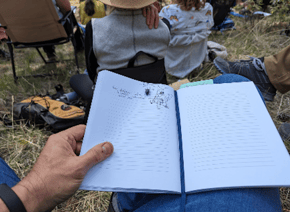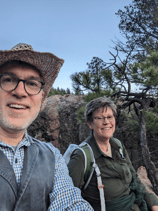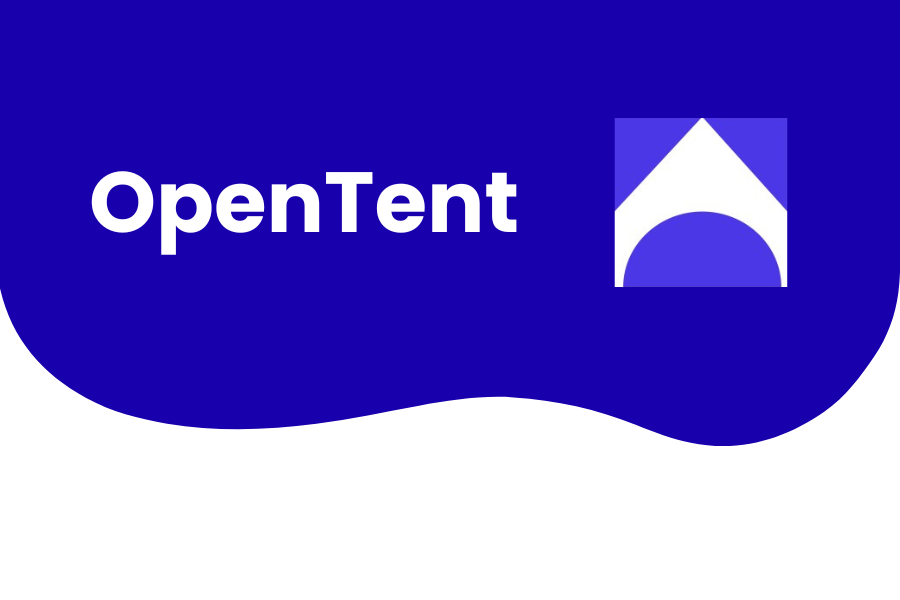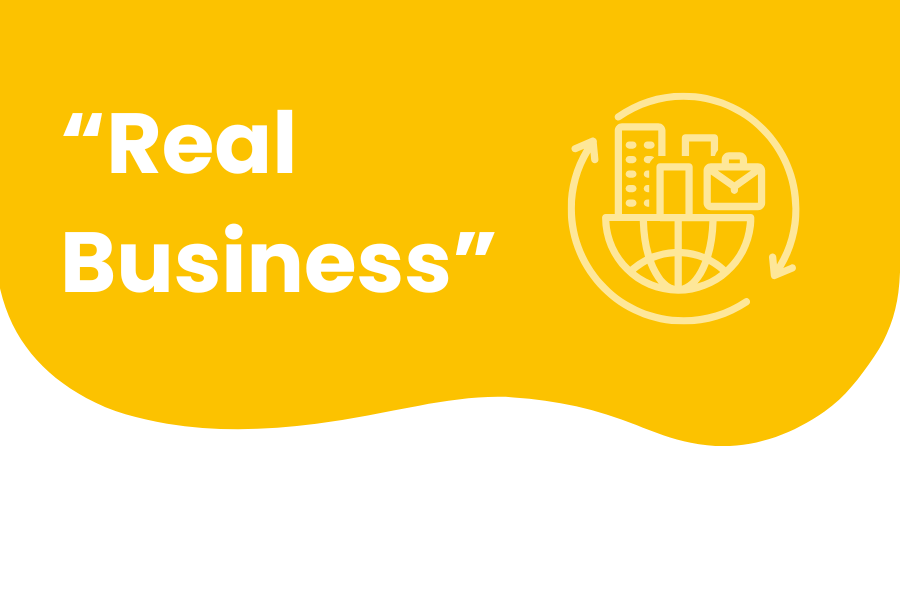Would you leave your business for 4 months? A Retrospective on a Successful 4 Month Sabbatical
.png?width=840&height=318&name=4%20Month%20Sabbatical%20Banner%20(Wide).png)
Small Giants companies believe in caring for their employees both on and off the clock. As a way to thank tenured employees and offer them well-earned time of rest, Trebuchet Group has hit the road running with their successful first sabbatical leaves.
At purpose-based companies, leaders know the importance of rest and restoration. Many universities and churches have a long history of providing their professors and ministers sabbaticals for renewal and fresh thinking. More and more values-based businesses are starting to offer sabbaticals, realizing the benefits to the employees and the business.
Since 2002, hundreds of organizations and executive leaders have trusted Trebuchet Group to help their companies and teams get lasting results. Our team of six works collaboratively with clients to customize engagements that help leaders gain clarity and confidence as they set out to make positive impacts in the world. As we continue to refine our mission, we believe people can thrive individually and collectively at work.
Part of that thriving involves taking intentional time for rest and restoration. Yet owners and leaders of smaller businesses know how hard it can be to actually step away from the work. After twenty years of positive impact, navigating ups and downs of small business ownership and significant detours during the pandemic, Chris and Diana wanted to practice what they preach and take intentional time for rest.
We are happy to share that in 2023, after months of planning, our CEO, Chris Hutchinson, and COO, Diana Hutchinson, were able to successfully take an intentional four-month pause away from the business.
Before they left, when we shared this news with others, we were typically greeted by a couple of responses. Perhaps some of these thoughts run through your mind:
- “Oh, I could never do that!”
- “Good for you! But what’s going to happen to the business?”
- “Sounds nice. Our small business can’t afford that.”
- “I’m not sure anything would actually get done if we chose to do that.”
- “Our company is different - that won’t work for us.”
Chris and Diana had some of these worries, as well. Before Chris left, he wrote his succinct answers to these objections in a blog post. And Chris shared, “Someone recently told me that they just figured out that life is actually live - there’s no fixing mistakes in post-production. In my humble opinion, all the reasons above are simply a smokescreen for fear of loss of control and 'What am I without my work?'”
This vulnerable mix of fears and the choice to live in the now allowed Chris and Diana to say “see you in August” with more peace.
And the good news is, with intentional planning and purposeful role exploration, our team ably ran the company in the absence of both the founders and leaders of the team.
After they returned, Diana reflected on what she learned from both the preparation and time away. She broke down her tips into what to do before, during, and after the sabbatical.
Here's what Diana shared:
Before
To start with, I interviewed other leaders who had taken a sabbatical to learn from their experiences. I gathered examples of sabbatical policies from other organizations to consider how we would implement a practice that could benefit all our team members. Chris and I set personal intentions for our sabbatical and thought about what types of activities we wanted to do (or not do) during this time away.
Months before we left, we created a RASCI chart of who makes what kinds of decisions, and we made a copy to indicate who would step in for which decisions during the sabbatical. This was really valuable since we split our CEO and COO roles between different team members. Our plan was for our team member Katie to serve as our interim COO, and Gurudev would be the interim CEO and CFO. Some types of decisions, like budgeting, were already accomplished for the year and didn’t need to be handed off. Other items like taking on debt or hiring/firing were noted as “wait or contact Chris and Diana.” On the other hand, decisions on prototyping new services had the note “you have permission!”
For the details of my operational role, I captured a list of what I do on a spreadsheet (and kept adding to it as I realized, “oh, and I do that, too”). Together with our support team, we identified who would do those tasks while I was gone. After I taught the person taking on each task, I let them take over doing the work while I was still in the building. I wanted to be around while we tested how well everything worked. We saw where things weren’t clear and tweaked the systems. We rolled out new systems to capture information from parts of the team to communicate with an outside support group who was taking on some of the financial tasks.
During this preparation time, it was hard for me to feel less productive as I sat on my hands and let others give it a go for some time before I left. However, this choice gave me the confidence to be able to step away for 4 months, especially since we identified triggers for when our team should reach out to us. These triggers included cash flow levels, employee struggles, or other crazy happenings like if our landlord suddenly told us he was selling the office!
Part of my preparation also involved looking at the email I got. Some mail was already going to a shared mailbox and didn’t need to change, just remove me from the email group. Some things I wanted to send to a personal email address instead. I took the opportunity to unsubscribe from many lists and notifications.
Another vital part of preparation is our long-term practice of creating financial reserves in the business. Having enough reserves allowed the team to keep the business going while Chris and I continued drawing our salaries. Our several years of playing the Great Game of Business meant everyone was familiar with the drivers and measures of success for running the business.
During
During the sabbatical, I didn’t check the metrics or the books. Does that surprise you? With the preparation we did ahead of time, and the agreement on triggers when they would reach out, I felt confident things were going fine. We sent each other monthly email “postcards” with a few highlights, which also added to my confidence that things were running well in our absence.
My time away was one of rest and renewal rather than the adventurous travel, taking on different kinds of work or accomplishing a project like some people do on sabbaticals. I focused on letting go of responsibilities, and where I continued some club and church participation, I saw myself in the role of a guest rather than a host. We started going to a gym and experimented with different types of classes and workouts. I read books and went on a couple of retreats, opening me up to different ways of thinking. I spent time during my sabbatical reflecting on my role and my connections with our mission of helping more people [including me!] thrive, individually and collectively, at work.



Returning
Based on advice from leaders I interviewed, we planned a transition period when we returned, rather than just going back to how things were done before the sabbatical. We met with each employee and asked them what went well for them, what was hard, what they learned, what they wanted to keep doing, and what they were ready to hand back! We also met as a group for a similar reflection on learnings and potential shifts going forward.
In the end, I’m happy to share that the sabbatical was helpful for my own renewal and also had upsides for our business. We decided not to wait for 22 years of company service before supporting others on our team with an intentional time off. We have implemented a sabbatical policy and are excited to support several weeks away for Katie and Gurudev in the next two years.
Some of the benefits of the changes we made include:
- I got to look at my activities and get beyond my fear that it would be too hard to hand some things off
- Team members are much clearer about what is happening with our finance systems and feel more ownership
- We are capturing information in a better way that lets everyone see what’s happening
- I unsubscribed from a lot of email, and organized what I am getting in a better way
- Our team increased their level of peer accountability, teamwork, and confidence they could work through challenges
- It gave others a chance to try some new activities and find some they like and some they were happy to give back!
And what about the experience of the employees who stayed and kept the ship sailing?
Katie shared that this was the first time she was able to experience the intense emotional labor that leaders work through when stewarding teams. She and Gurudev built a strong partnership as they worked together to mentor and guide our team, meeting weekly to support and troubleshoot as challenges arose.
During the sabbatical, the team ran some experiments with marketing and new structure for our sales meetings. We worked through assumptions and frictions and discovered a new appreciation for how we can partner with one another to keep things running even when workload is high. We got to practice peer accountability that is so important on strong teams.
As Chris and Diana prepared to return, Katie met with them to discuss what we were learning and what we hoped to keep doing. We intentionally planned a slow on-ramp for Chris’ typically packed schedule and selectively invited re-engagement conversations with key clients and partners. And the team were all asked to reflect on what they learned and the support they may need as they looked to the year ahead.

Our team at Trebuchet Group is proud of what we accomplished in 2023, and upon Chris and Diana’s return, we worked through a team session to re-commit to what we each want to keep, do-again, or toss in the ways we work together. At the end of this process, we all agreed, we want to preserve our work helping purpose-driven clients work together better.
We are exploring what a sabbatical policy can look like for our employees who have a longer tenure. This year, two employees are reaching a seven year mark, and we are planning to offer sabbaticals to them after this milestone. We’re asking questions about intentions and growth and we continue to ask questions around sustainable pace and work life balance in service of all of our thriving.





Submit Your Comment